Body Illustrated and Bodyworks: Two anatomy applications for DOS.
Body Illustrated and Bodyworks are two interactive computerized human anatomy references, that run on DOS. They are informal educational/multimedia products targeted at home users. I tried the two programs on MS-DOS 7.10; they should also work correctly on MS-DOS 6.22 and FreeDOS. They have both their positive and negative aspects; I would suggest that you install both. To note, that I failed to make sound work for both of them. This might, however, be a problem on my system (?).
Body Illustrated.
Body Illustrated 1992 can be downloaded from the WinWorld website. The download includes both a set of 3.5" and 5.25" floppy diskettes. However, it seems that 3.5" diskettes are corrupted; I did not succeed to mount them. As the 5.25" floppies are 1200 kB diskettes, that are not supported by VMware Workstation (cf. my article VMware: Irrecoverable error when accessing floppy diskettes), I extracted their content and copied it onto empty 3.5" diskettes.
Install the application by running install.exe from the first diskette. The default installation directory is c:\body. The application executable is called body.exe.
The screenshot on the left shows the startup screen of the application. Don't worry if there is no mouse support on this page. Just hit ENTER to get to the main menu screen (screenshot on the right). Here, the mouse works, and all features may be accessed from here.

|
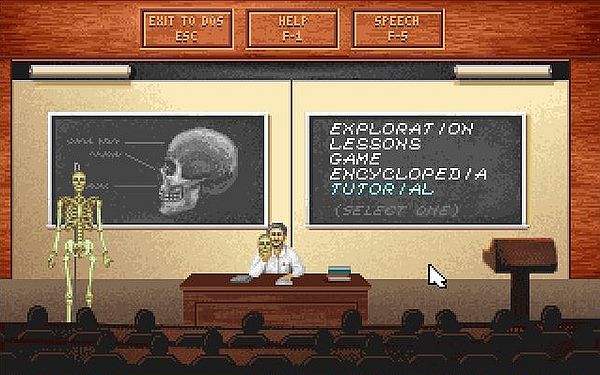
|
The menu entry Exploration lets you explore the different systems of the human body: skeletal system, muscular system, nervous system, cardiovascular system... This exploration is all interactive. The body part to be displayed can be selected among the items in the list.
Body Illustrated displays the different body parts using different colors. This is more descriptive than the "more real-world like" display used by Bodyworks. Two negative aspects, however: 1. the application is rather slow (it takes some time before the selected part is displayed); 2. the application seems only support the usual DOS resolution of 640×400 pixels.
The screenshot below shows the starting point of the skeletal system, i.e. the bones of the entire body.
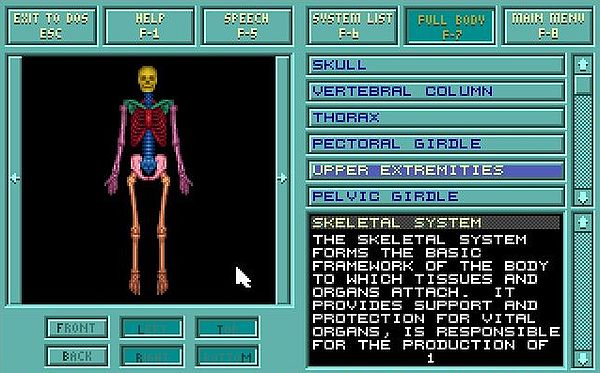
|
Choosing "Thorax" from the list, will display this part of the body. The default view is from the front (screenshot on the left). Use the buttons below the image to choose another view. The screenshot on the right shows the thorax back view.
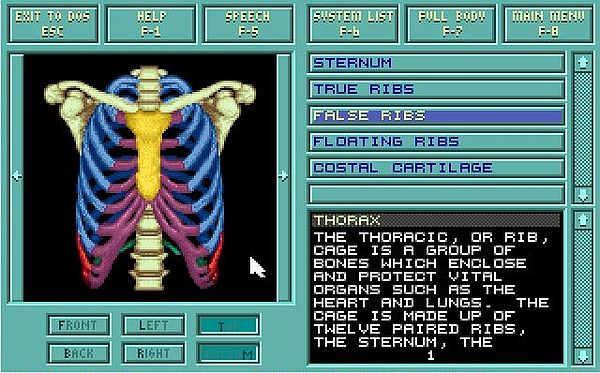
|
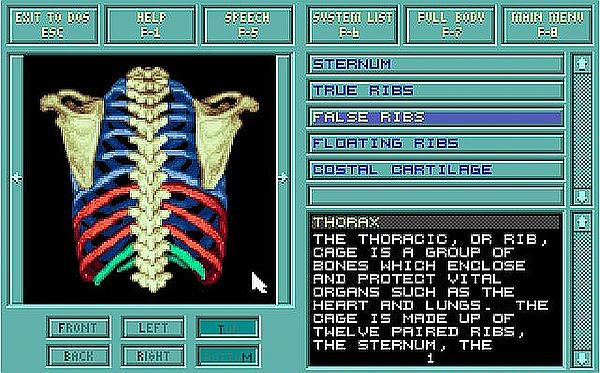
|
Besides the different colors for the different body parts, the different views available are an advantage of Body Illustrated in comparison with Bodyworks, that includes less views from the side (and also from the back).
The Lessons item on the main menu may be used for a systematic study of one of the main anatomy systems of the body. The screenshot on the left shows the main lessons menu. The screenshot on the right shows the first page of the "cardiovascular system" lesson.
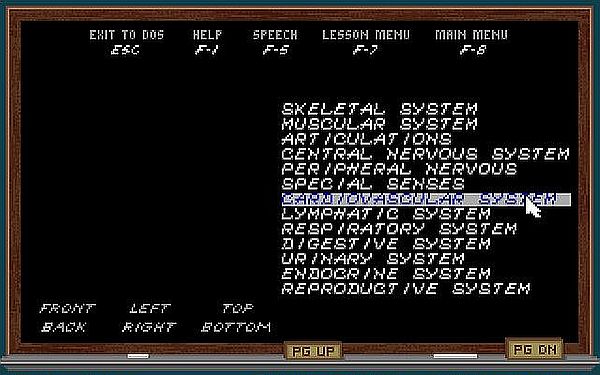
|
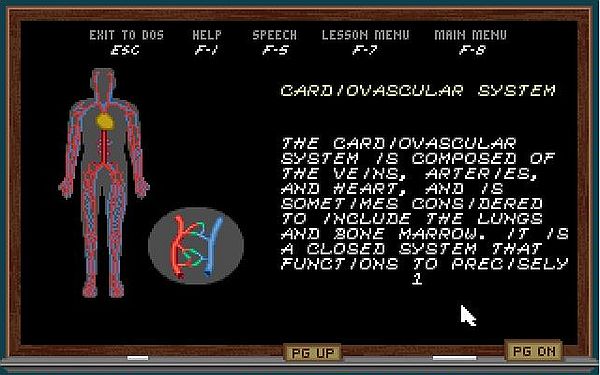
|
The Game item on the main menu is an anatomy quiz for one or two players, where the users have to identify, on the picture, the body part displayed with its name. To do so, use the up and down arrows to successively highlight the different body parts, then double-click the part that you think to be the correct answer (or, select this part by single-click and hit ENTER). Note, that if nothing seems to happen, it's because (as I already said) the application is rather slow; just be patient! The time to answer a given question is limited. The beating heart and the egg are your timer. The faster they move, the less time you have left. If the egg gets flat, the time is over.
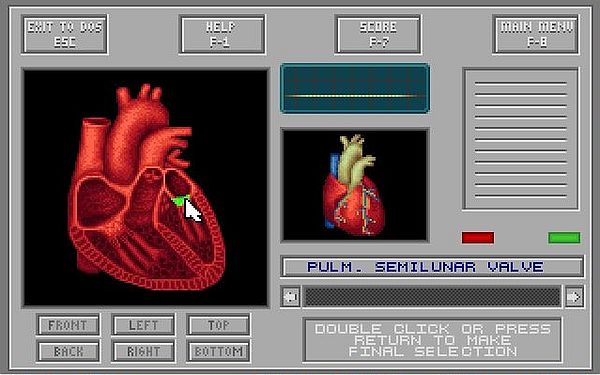
|
Two more items in the main menu: Encyclopedia allows you to search for anatomy related terms, and Tutorial is a tutorial about how to use the Body Illustrated application.
Bodyworks.
Bodyworks 3.0 can be downloaded from the WinWorld website. The download includes a set of five 3.5" floppy diskettes. To install the program, run install.exe. On a pure DOS system, there is no use to install the Windows version of the program; thus, you might want to unselect this component. The default installation directory is c:\body3. The application executable is called body3.exe.
The screenshot shows the application's main screen. Note, that this program runs at a resolution of 640x480. Also, there is not the slowness problem that we have with Body Illustrated.
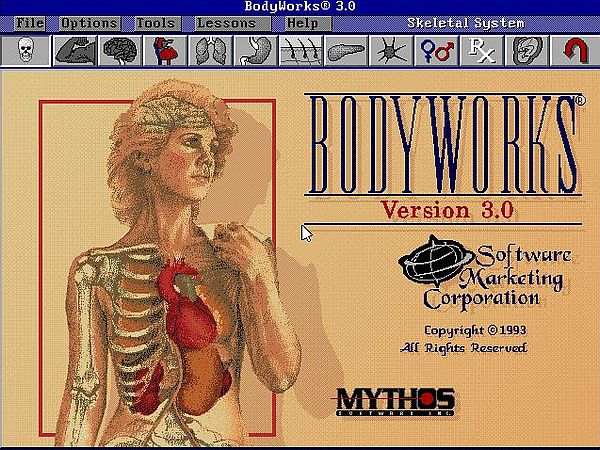
|
The application starts in exploration mode. The different systems of the human body (skeletal system, muscular system, nervous system, cardiovascular system...) are chosen by clicking one of the icons at the top of the screen. Then, we can choose what to display from the list. A line indicates what this body part corresponds to on the image. Double-clicking the body-part will display its picture and the related information. For descriptive purposes, especially for people who only start learning about anatomy, the multiple color usage of the Body Illustrated application would be an advantage; also more views from the left or from the right would be helpful for anatomy newbies.
The screenshot on the left shows the back view of the muscular system of the entire body, with the location of the "biceps femoris" indicated. The screenshot on the right shows details concerning the "biceps femoris".
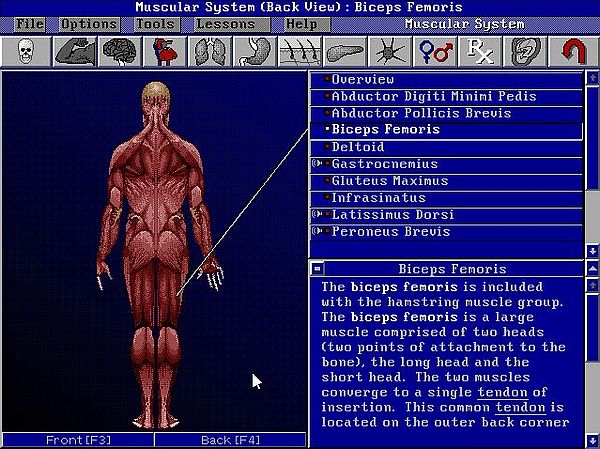
|
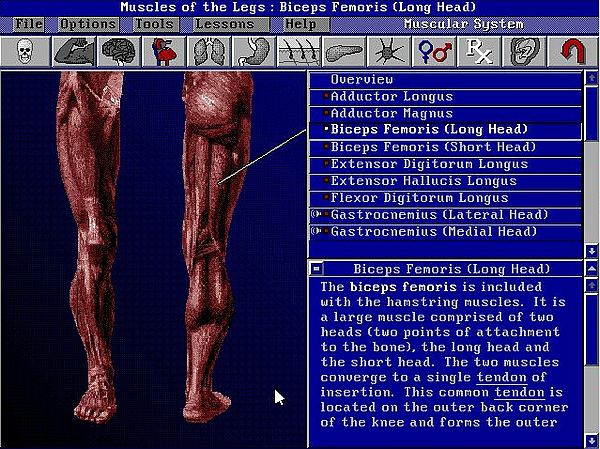
|
Two further screenshots: On the left, a lateral view of the skull; on the right, the external view of the heart.
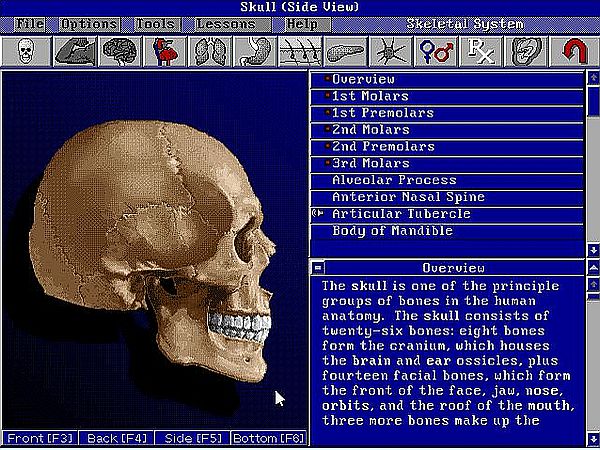
|
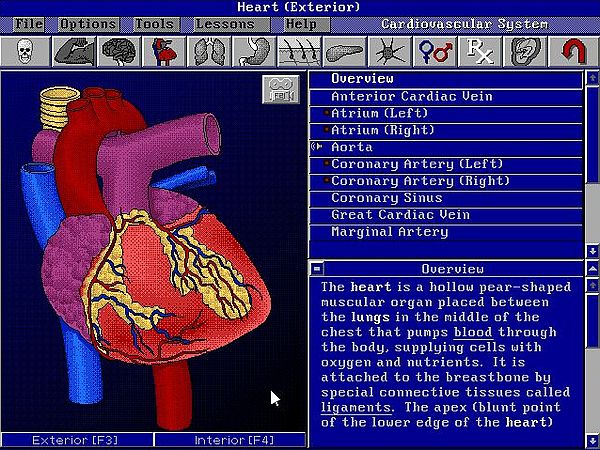
|
As Body Illustrated, the application includes full study lessons. The lessons main screen is displayed by selecting the corresponding item from the menu bar. You can choose a lesson from the list. Pressing "L" will open a menu, where you have options like going to the next or previous page, and to quit the lesson. To navigate the pages, you can also use the "+" and "-" keys.
The screenshot on the left shows the main lessons menu. The screenshot on the right shows a page from the "digestive system" lesson.
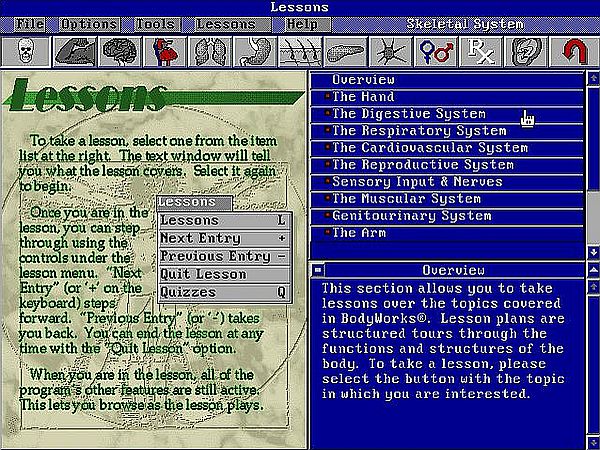
|
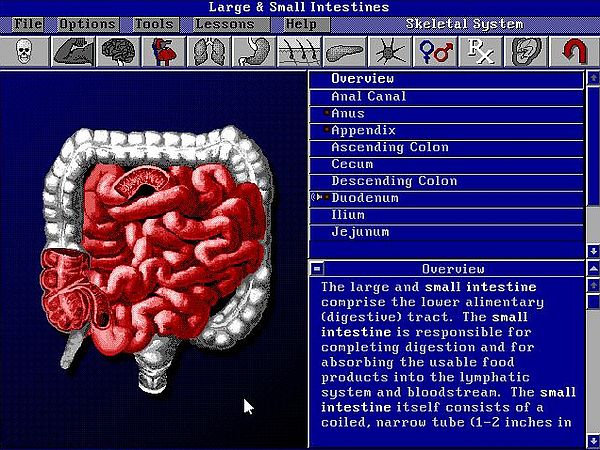
|
And there are also quizzes. In some sense, they are the contrary of those in Body Illustrated: You have to find the (multiple choice) name of the body part displayed on the picture.
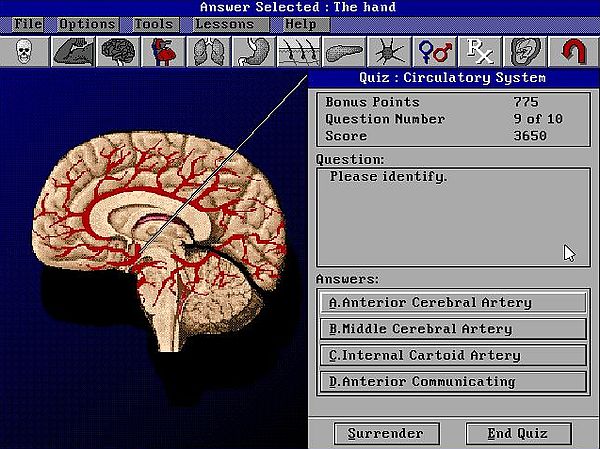
|
Finally, the application includes several "in vivo" videos. The screenshot on the left shows an external view of a beating heart. The screenshot on the right shows a sonogram of a beating heart, with the opening and closing aortic valve being visible.
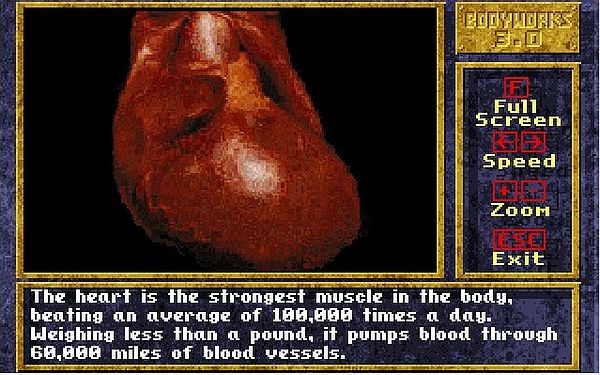
|
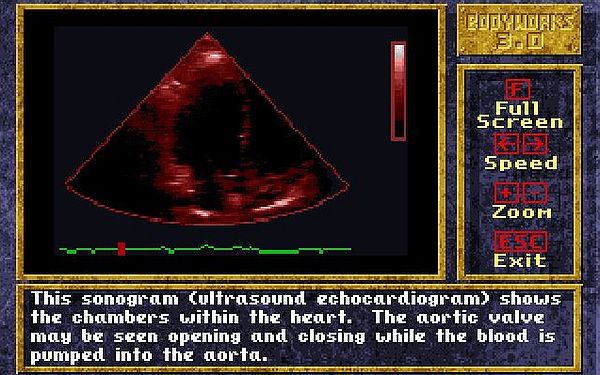
|
If you like this page, please, support me and this website by signing my guestbook.